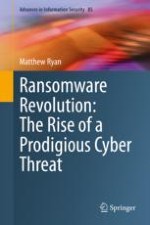2021 | OriginalPaper | Buchkapitel
2. Genesis of Ransomware
verfasst von : Matthew Ryan
Erschienen in: Ransomware Revolution: The Rise of a Prodigious Cyber Threat
Aktivieren Sie unsere intelligente Suche, um passende Fachinhalte oder Patente zu finden.
Wählen Sie Textabschnitte aus um mit Künstlicher Intelligenz passenden Patente zu finden. powered by
Markieren Sie Textabschnitte, um KI-gestützt weitere passende Inhalte zu finden. powered by
